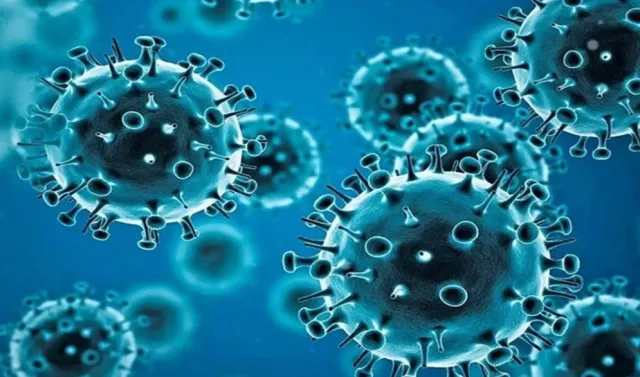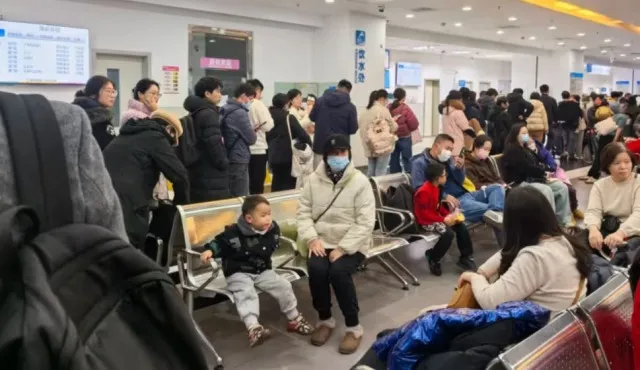Human Metapneumovirus (HMPV) has recently captured global attention, with rising cases in China, the UK, and the US. Often resembling a common cold, this flu-like illness poses significant risks, especially for vulnerable populations. As concerns grow, understanding its symptoms, spread, and prevention strategies is more critical than ever. Let’s dive into what you need to know about HMPV.
HMPV Cases Surge Across China and Beyond

In recent weeks, HMPV cases have spiked across northern China, with young children being the most affected group. According to the Chinese Center for Disease Control, outpatient visits for flu-like symptoms have risen sharply. Reports indicate that over 7% of visits in some northern provinces are due to respiratory illnesses, marking a considerable increase compared to previous weeks.
Southern regions are not immune either, with outpatient cases surging by 21%. This concerning trend has drawn comparisons to seasonal flu waves. Beyond China, the UK has reported a “marked increase” in HMPV cases this winter, with the virus appearing more frequently than in past years. Experts attribute these rising numbers to better diagnostic tools and increased public awareness.
Understanding HMPV Symptoms and Risks
At first glance, HMPV symptoms might seem indistinguishable from the common cold. Most cases present with mild symptoms such as persistent cough, nasal congestion, sore throat, and fever. For most healthy individuals, these symptoms resolve within a few days. However, the virus becomes significantly more dangerous for young children, the elderly, and individuals with compromised immune systems.
Severe symptoms can include bronchitis, bronchiolitis, pneumonia, shortness of breath, and wheezing. If symptoms persist or worsen, especially in high-risk groups, seeking medical care is essential. Early intervention can prevent complications and reduce the likelihood of hospitalization.
How HMPV Spreads and Prevention Measures
HMPV spreads through respiratory droplets, much like the flu or common cold. Sneezing, coughing, or even talking can release infected droplets into the air, making crowded and poorly ventilated spaces breeding grounds for the virus.
To protect yourself and others, follow these basic but effective precautions:
- Wash your hands frequently with soap and water.
- Cover your mouth and nose when coughing or sneezing.
- Avoid close contact with individuals showing symptoms.
- Keep indoor spaces well-ventilated to minimize the risk of infection.
Experts emphasize the importance of staying home if you’re feeling unwell to prevent further transmission. Personal hygiene, though simple, is one of the most effective defenses against HMPV.
No Vaccine Yet – Symptom Management is Key

Unlike COVID-19 or RSV, no vaccine or antiviral treatment exists for HMPV. This means treatment primarily focuses on managing symptoms rather than curing the virus itself.
For mild cases, you can take the following steps:
- Rest adequately to support your immune system.
- Stay hydrated to keep mucus membranes moist.
- Use over-the-counter medications to relieve symptoms such as fever or congestion.
However, severe cases may require hospitalization. Medical interventions like oxygen therapy or intravenous fluids are used to manage complications. Protecting vulnerable populations—especially children and seniors—remains a top priority.
HMPV and the Global Perspective

Though the virus is not new, its recent surge highlights the importance of global health vigilance. Professor Jonathan Ball of the Liverpool School of Tropical Medicine notes that HMPV has been circulating among humans for over 50 years. Despite its longevity, awareness of the virus remains relatively low.
In countries like the UK, flu admissions have skyrocketed, with hospitals seeing increased patient loads due to respiratory illnesses. Experts believe the rise in cases may be partially due to heightened social activities during the holiday season. Meanwhile, Chinese officials have acknowledged that the recent spike in flu-like illnesses aligns with typical winter trends, though the higher-than-usual rates have raised eyebrows.
Experts Urge Caution, Not Panic
It’s easy to see headlines about a surging virus and feel alarmed. However, health officials urge caution rather than panic. Most HMPV cases are mild and manageable with proper care. Professor Paul Hunter from the University of East Anglia highlights that the majority of children contract HMPV by the age of five, often with few to no complications. Recurrent infections are common but rarely severe.
The focus, according to experts, should remain on prevention and early detection. By practicing good hygiene and seeking timely medical attention when symptoms worsen, the risks of severe illness can be minimized.
Conclusion
Human Metapneumovirus might not dominate global headlines like COVID-19, but its recent resurgence is a reminder of how quickly respiratory viruses can impact our lives. With spikes in cases across China and beyond, understanding its hidden symptoms and prevention strategies is vital. While there’s no vaccine yet, simple steps like regular handwashing, avoiding close contact, and staying informed can make a world of difference. Let’s stay vigilant and protect our most vulnerable populations during this season of respiratory illness.


